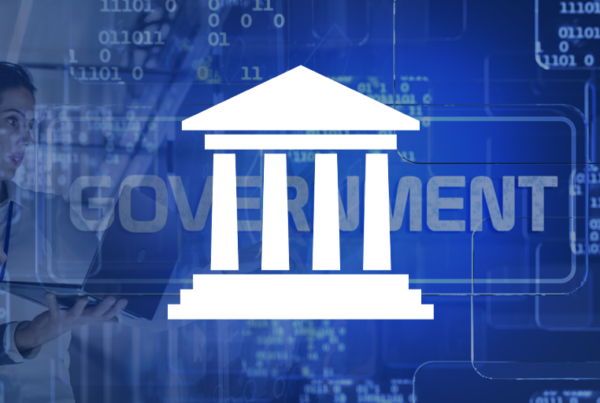Many consider Augmented reality (AR) to be the next big technological leap in computing. The ability to digitally modify our physical environment has limitless business and consumer uses. Businesses are exploring use cases such as virtual business meetings and collaboration with remote partners. Consumers already have access to apps that can show digital products in their homes. But how can governments and public bodies make use of AR technology?
Smart forms and smart documents
The first step to making use of AR in the public sector is to transform the billions of documents and forms into smart objects. As smart objects, citizens could access, view and complete them through any AR-enabled device. Officials could do the same to policy and regulatory documents, creating interactive experiences. Accessibility aids such as sound, translations, and even visual and graphical instructions could then be layered on top.
Public works visualization
Government-funded public works projects transform our towns and cities daily. Highways, water and energy facilities, public parks, and public transit infrastructure are all managed by government bodies. Officials often invite citizens to participate in the public planning, but many aren’t able to visualize how it will physically transform their town. With AR, officials could render the projects in real-time and shared with anyone interested. With any AR-enabled device, citizens could actually see how a project will look.
Asset maintenance and management
Most smart devices are AR-enabled, including smartphones, tablets, smart glasses, and more. However, new technology is transforming objects such as windshields, windows, microscopes, and even lenses into screens for AR. With access to such devices, government workers can access information on government-maintained assets and projects. Officials could get technical information on streetlights, water wells, roads, and cell towers in real-time through their smartphones. Then they can connect with contractors to diagnose issues and collaborate to resolve them.
Transportation planning
A lot of effort goes into planning new transportation infrastructure. With AR, government engineers and private contractors can team up to build three-dimensional models of new transportation lines. With an AR device, officials could then simulate how the changes would impact existing traffic flows and movement patterns. Immersion into the proposed environment will reveal details that otherwise might go unnoticed. The same application could reveal directions to specific transit stops, speed limits, or traffic congestion alerts.
Emergency services
When combined with a windshield heads-up display, AR can help emergency staff track the best route to their destination. Departments can equip first responder vehicles with sensors that detect and display the presence of hazardous substances on the windshield. And emergency responders can receive real-time information on evolving situations through head-mounted AR displays. Institutions can also release a citizen-facing app that sends out notifications in case of a disaster in real-time, along with evacuation routes and the nearest shelters.
Virtual training
Studies have shown that hands-on experience is the most important indicator of success in real-life situations. But setting real-life fires for firefighter training can be costly and dangerous. Hiring actors and scripting training events to simulate real-life emergency situations for police or other first responders are costly and time-consuming. Training officials in airports to coordinate emergency responses in crowded public spaces is difficult without costly actors. With head-mounted displays, officials can inexpensively create immersive virtual environments for training purposes. With more frequent and realistic training, government staff will perform better in real situations.
Culture, heritage, and tourism
Towns, states, and nations across the world have recognized that their heritage can be one of their most valuable assets. Officials can recreate and share historic buildings, monuments, artwork, and other artifacts as immersive environments. They can create rich educational experiences by layering natural resource locations over the familiar landscape. Past events and scenes, such as battles and earlier settlements, can be delivered through AR, providing unmatched historical awareness. Citizens, students and tourists alike will appreciate the city, its inhabitants and environment more.
Augmented reality can help public bodies improve their efficiency while engaging citizens and visitors. It is just starting to be adopted as a viable solution, and but officials are proposing and implementing new use cases every day. We predict that we will see increasing adoption around the world as more success stories are published.



























